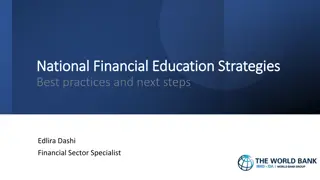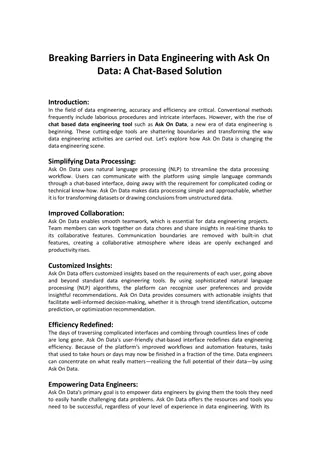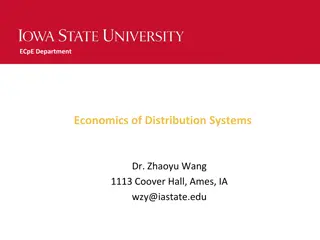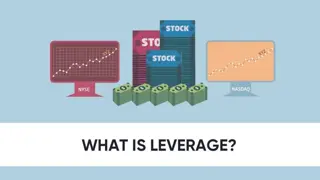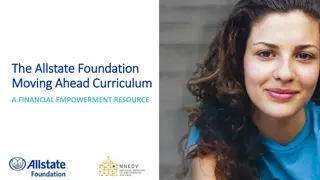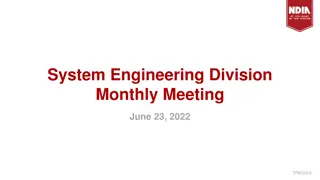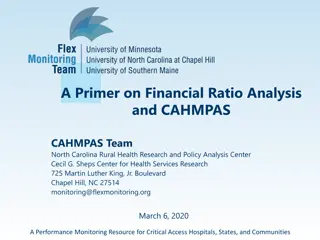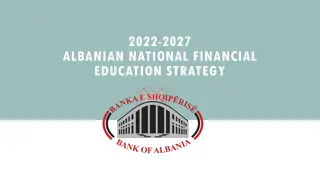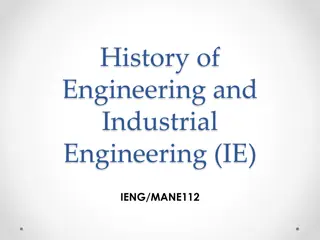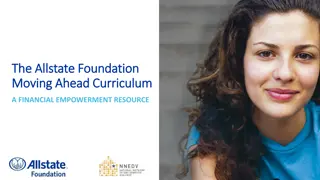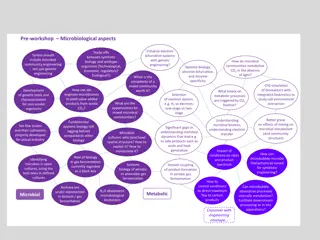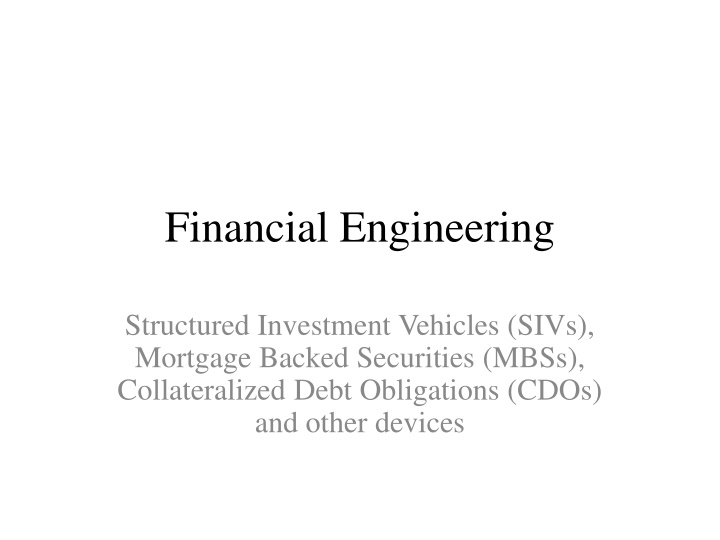
Financial Engineering and Debt Trends
Explore the world of financial engineering through Structured Investment Vehicles (SIVs), Mortgage-Backed Securities (MBSs), Collateralized Debt Obligations (CDOs), and more. Dive into the growth of US private and total debt, and the theories by Minsky and Wolf on financial instability.
Download Presentation

Please find below an Image/Link to download the presentation.
The content on the website is provided AS IS for your information and personal use only. It may not be sold, licensed, or shared on other websites without obtaining consent from the author. If you encounter any issues during the download, it is possible that the publisher has removed the file from their server.
You are allowed to download the files provided on this website for personal or commercial use, subject to the condition that they are used lawfully. All files are the property of their respective owners.
The content on the website is provided AS IS for your information and personal use only. It may not be sold, licensed, or shared on other websites without obtaining consent from the author.
E N D
Presentation Transcript
Financial Engineering Structured Investment Vehicles (SIVs), Mortgage Backed Securities (MBSs), Collateralized Debt Obligations (CDOs) and other devices
Minsky, Leverage Hyman Minsky Financial Instability Hypothesis Minsky Moment Irving Fisher Debt Deflation
Wolf, Martin, The Shifts and the Shocks: What Weve Learnedand Have Still to LearnFrom the Financial Crisis. Penguin, 2014. Reviewed by Paul Krugman, Why Weren t Alarm Bells Ringing? The New York Review of Books, October 23, 2014, pp. 41-42.
The Growth of US Private Debt (Billions of Dollars) 70,000 60,000 50,000 40,000 30,000 20,000 10,000 0 55 60 65 70 75 80 85 90 95 00 05 10 15 20 Source: FRED Household Nonfinancial business Financial business
The Growth of US Private Debt (Percentage of GDP) 300 250 200 150 100 50 0 55 60 65 70 75 80 85 90 95 00 05 10 15 20 Source: FRED Household Nonfinancial business Financial business
The Growth of US Total Debt (Billions of Dollars) 100,000 80,000 60,000 40,000 20,000 0 55 60 65 70 75 80 85 90 95 00 05 10 15 20 Source: FRED Household Nonfinancial business Financial business Federal
The Growth of US Total Debt (Billions of Dollars) 100,000 80,000 60,000 40,000 20,000 0 70 75 80 85 90 95 00 05 10 15 20 Source: FRED Household Nonfinancial business Financial business Federal
Thr Growth of US Total Debt (Percentage of GDP) 400 350 300 250 200 150 100 50 0 70 75 80 85 90 95 00 05 10 15 20 Source: FRED Household Nonfinancial business Financial business Federal
AAA Corporate Bond Yields versus 10-Year Treasury Yields 1999.01-2023.12 9 8 7 6 5 AAA 4 3 2 10-Year T-bond 1 0 00 02 04 06 08 10 12 14 16 18 20 22
Risk Premium AAA Corporate Bond Yield - Ten-Year US Treasury Yield 1990.01-2023-12 (Average for the period = 1.51 percentage points) 2.8 2.4 2.0 1.6 1.2 0.8 0.4 00 02 04 06 08 10 12 14 16 18 20 22
Leverage Bank One Bank Two Assets 100 Liabilities 80 20 NW Assets 100 Liabilities 95 5 NW Capital Ratio: 20/100 = 20% Leverage Ratio: 100/20 = 5 One s return on ? = 100 0.05 80 0.04 20 Capital Ratio: 5/100 = 5% Leverage Ratio: 100/5 = 20 Two s return on ? = 100 0.05 95 0.04 5 = 24% = 9%
Introductory Concepts Probability Two independent events, A and B = Pr( ) Pr( ) A Pr( ) A B B Two non-independent events = Pr( ) Pr( | ) A Pr( ) A B B A
Expected value = + [ ] E X Pr( ) Pr( ) x x x x 1 1 2 2
The Simple Case Asset characteristics Probability of default = 10% Price $900 Rate of Return 11.11% IOU $1,000
Key assumption: statistical independence of assets A Portfolio of Assets Probability of default for each asset = 10% Possible outcomes IOU $1,000 Outcome $2,000 $1,000 $0 Probability 81% 18% 1% IOU $1,000
Create two new assets (e.g., MBSs) based on the portfolio Senior tranche Probability of default Price Rate of return IOU $1,000 1% $990 1.01% Junior tranche IOU $1,000 19% $810 23.46%
Rating Systems (simplified) Moody s Aaa,Aa,A, Baa investment grade Ba, B, Caa, Ca, C Standard & Poor s AAA, AA, A, BBB, BBB- investment grade BB+, BB, B, CCC, CC, C, D
Now, assume perfect correlation between the two original IOU s Senior tranche Had a pr. of default = 1%, now 10% Was worth $990, now it s worth $900 Junior tranche Had a pr. of default of 19%, now 10% Was worth $810, now it s worth $900 Thus, risk pricing completely backwards Prudent investors lost, hedge funds gained
Those who warned about the coming crisis Raghuram Rajan, Professor, University of Chicago, Booth School of Business Nouriel Roubini, Professor, NYU Stern School of Business Paul Krugman, Professor, Princeton University Dean Baker, Center for Economic Policy and Research Med Jones, President, International Institute of Management Peter Schiff, CEO, Euro Pacific Capital, Inc. Bob Shiller, Professor, Yale University Byron Dorgan (http://billmoyers.com/segment/byron-dorgan-on-making-banks-play-by-the-rules/ )
Market Fundamentalism Markets are self-correcting The best government is a small government The financial crisis was an accident Add a few courses on ethics
What to do? Analogies FDA NTSB Sports Hurricanes and other natural disasters Are markets self regulating? Information asymmetry Moral hazard
Regulation Government size Is small good? Glass-Steagall
Costs and Benefits of the Financial System [Benjamin Friedman] In both instances [the dot.com crash and the housing bubble burst], the cost was not just financial losses but wasted real resources. Moreover, to ask just how efficient a financial system is in allocating capital leads naturally to the question of the price that is paid for such efficiency. The share of the finance sector in total corporate profits rose from 10 percent on average from the 1950s through the 1980s, to 22 percent in the 1990s, and an astonishing 34 percent in the first half of this decade.
Friedman [continued] Those profits accruing to the financial sector are part of what the economy pays for the mechanism that allocates its investment capital (as well as providing other services, like checking accounts and savings deposits). The finance industry s share of US wages and salaries has likewise been rising, from 3 percent in the early 1950s to 7 percent in the current decade. An important question is what fraction of the economy s total returns to productively invested capital is absorbed up front by the financial industry as the costs of allocating that capital.
Friedman [continued] the Financial Accounting Standards Board recently changed its rules to allow banks more latitude to claim that assets on their balance sheets are worth more than what anyone is willing to pay for them.
The Robo-Signing Issue The robo-signing largely involved assignments of mortgage notes to mortgage servicers or trusts representing the investors who put up the loan money. Assignment was necessary to give the trusts legal title to the loans. But assignment was delayed until it was necessary to foreclose on the homes, when it had to be done through the forgery and fraud of robo-signing. Why had it been delayed? Why did the banks not assign the mortgages to the trusts when and as required by law?
Robo-Signing A working hypothesis, suggested by Martin Andelman: securitized mortgages are the pawns used in the pawn shop known as the repo market. Repos are overnight sales and repurchases of collateral. Yale economist Gary Gorton explains that repos are the deposit insurance for the shadow banking system, which is now larger than the conventional banking system and is necessary for the conventional system to operate. The problem is that repos require sales, which means the mortgage notes have to remain free to be bought and sold. The mortgages are left unendorsed so they can be used in this repo market.
SPVs and MERS The shadow banking system evolved in response to the need for large institutional investors to park their money securely and earn some interest. The special purpose vehicle (SPV), which acts as the shadow bank, evolved in response to this need.
MERS The housing shell game was made possible because it was all concealed behind an electronic smokescreen called MERS (an acronym for Mortgage Electronic Registration Systems, Inc.). MERS allowed houses to be shuffled around among multiple, rapidly changing owners while circumventing local recording laws. Title would be recorded in the name of MERS as a place holder for the investors, and MERS would foreclose on behalf of the investors.
Robo-signing (references) Martin Andelman http://4closurefraud.org/2010/10/10/mandelman-the-signin-or-pardon-me-mr-banker-but-your-remic-is-showing/ Ellen Brown (primary) http://www.nationofchange.org/why-all-robo-signing-shedding-light-shadow-banking-system-1327846780 Gary Gorton (more general) http://online.wsj.com/public/resources/documents/crisisqa0210.pdf
Six Films on the Financial Crisis Margin Call (2011) Too Big To Fail (2011) Inside Job (2010) Frontline: The Warning (2009) The Flaw (2010) Enron: The Smartest Guys in the Room (2005)
Fed Funds Rate (1) FEDFUNDS 20 16 12 8 4 0 55 60 65 70 75 80 85 90 95 00 05 10
Fed Funds Rate (2) FEDFUNDS 9 8 7 6 5 4 3 2 1 0 90 92 94 96 98 00 02 04 06 08 10 12 14
Legislation Dodd Frank Wall Street Reform and Consumer Protection Act (Effective: July 21, 2010) Volcker Rule, effectively eliminated January 2020.
Shelley, Lindsey A., The High Price of Low Interest Rates: An Empirical Investigation of the Claim that Too Low Interest Rates Contributed to the Current Financial Crisis. Senior Thesis, Union College, 2008-09
They should have known Not everyone regards a house as an investment. We do not make this statement about Cars [NTSB] Medicines [FDA] Appliances [Consumer Union] Food [Dept. of Agriculture] Just about anything
They should have known Externalities Neighborhood level Macroeconomic level Global level
They should have known Top financial firms do not believe in this Too big to fail Too big to jail To what purpose?
People demand much higher standards of evidence for unpopular or unexpected findings than for comfortably familiar findings. George Stigler, Nobel Laureate, Economics Memoirs of an Unregulated Economist (Chicago, 2003)


